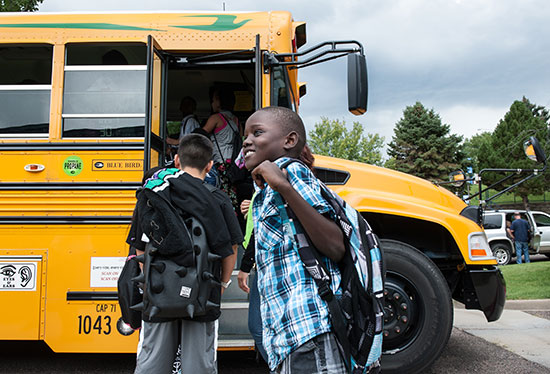School Bus Idle Reduction Strategies

School bus idling leads to wasted fuel and increased emissions. This can have negative health impacts for people near the buses, especially schoolchildren.
As a general rule, bus engines should be turned off immediately after arriving at loading or unloading areas. The school bus should not be restarted until it is ready to depart, and during early morning warm-ups, idling should be limited to the manufacturer’s recommendation (generally no more than five minutes). Additional heat, provided by auxiliary equipment, may be required to warm up the passenger compartment.
To support reducing school bus idling, the U.S. Environmental Protection Agency (EPA) developed the Idle-Free Schools Toolkit for a Healthy School Environment. This campaign:
- Provides an opportunity for bus drivers, transportation managers, school administrators, teachers, parents, and children to learn about air quality and diesel emissions.
- Recognizes the positive contributions being made by school bus drivers.
- Promotes idle reduction as an easy way to save money by saving fuel, reduce engine wear and tear, and reduce emissions, thereby improving air quality and protecting the health of drivers and children.
School Bus Idle Reduction Technologies
For school buses (and transit buses) that operate in cold climates, fleet managers have options to reduce idling time through technologies that pre-heat cold engines or provide an independent source of heat for the cabin. Supplemental diesel or electric block heaters can be effective at helping with cold starts, but such technologies may provide only limited warmth to the cabin without the aid of the bus engine. Though less common, stand-alone heaters, such as the Webasto Air Top heater, can also warm or retain heat in the passenger compartment without engine idling. Additionally, electric transit buses sometimes use roof-mounted diesel heaters during the winter as an independent source of cabin heat, which could be a viable technology for school buses as well. The EPA has more information available about these idle reduction technologies.